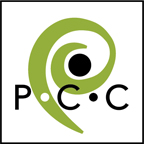FAQ for the PCC TCN Pteridoportal: http://www.pteridoportal.org/portal
Entering data into the Pteridoportal
How do I add new user accounts to my collection?
Here are instructions for how to create new accounts and change permissions for existing accounts: https://pteridophytes.berkeley.edu/wp-content/uploads/sites/34/2018/11/PteridoPortalAccountsandPermissions.pdf
I changed the permissions for a user account, but the permissions have not been updated yet.
Have the user log out and then log back in again. The permissions should now be updated
Why aren’t my institution’s fossil and extant specimens in the same collection?
All institutions that have both fossil and extant fern specimens have two collections in the portal. This makes it easier to search and enter data. In the search interface, you can include both fossil and extant specimens in your query, or limit your search to just fossil, or just extant specimens.
Can I include non-pteridophyte data in the Pteridoportal?
No, the Pteridoportal should only include Pteridophyte specimens. If you are looking for a place to manage all of your specimen data consider joining a different portal for that purpose. Many regional portals (such as SERNEC) allow you to enter data from outside of that region into the portal. We recommend you do live data entry in another portal that can accommodate your entire collection and transfer your Pteridophyte records to the Pteriodoportal as snapshots. Contact us for more information as needed.
If my institution is already entering live data into another Symbiota portal, can we also enter live data into the Pteridoportal?
It is highly recommended that you only have your data as a live dataset in one Symbiota Portal. So if your collection is already set up as a live dataset in another portal such as SERNEC or MAM, you should enter your data for this project into that portal and export the Pteridophyte records as a snapshot to the Pteridoportal.
If you were managing the data as live datasets in two portals, you might accidentally enter the data twice, once in each portal. Additionally, if you transfer data back from a Symbiota portal to an in-house database, having to transfer data from two separate portals can create more work for your database manager. If you have any questions about how best to proceed, please contact us.
If we have an existing in-house database, should we enter project data into that database or the Pteridoportal?
This decision should be made in consultation with your in-house database manager. Some institutions have reported difficulties in exporting data from Symbiota back into their home databases. Your collection database manager might prefer that all data entry is done in your internal database, and data is regularly exported as a snapshot to the Pteridoportal.
Does my institution’s data get automatically pulled into the Pteridoportal from another Symbiota portal (aka SERNEC)?
Not at this time, although this feature is under development. For now, updates must be done manually. We recommend doing this on a weekly basis. Portal Manager Joyce Gross can do this for you if needed. Please note that it is very important to map your data fields correctly, so if you have any questions about the process, contact Joyce Gross.
How do I update my data in the Pteridoportal if my collection is a snapshot collection?
Updating Snapshot Collections in the Pteridoportal.
My data was just updated in the portal but I’m not seeing records I recently created in my home portal?
Check to see when the DarwinCore Archive for your home portal data was last refreshed. Records that have been edited/created since the refresh data will not have been transferred in the snapshot. You can see when the Archive was last updated by going Administration Control Panel for your collection and clicking on Darwin Core Archive Publishing. Add information about how to update the DarwinCore Archive
What taxonomy should I use?
The portal will accept any names, so you should follow your local guidelines for entering names from specimens. Many institutions enter the current filing name. Once data has been entered into the portal, taxonomic cleaning tools can be run which check the entered names against the central thesaurus, which is built from the World Ferns database. Information about our taxonomy can be found on our project website here: https://pteridophytes.berkeley.edu/project-resources/taxonomic-resources/
To learn more about how to use the taxonomic and other cleaning tools in Symbiota, watch this recording of a webinar led by Ann Barber: http://idigbio.adobeconnect.com/pvn1kaprwj5o/
If my data is a snapshot in the Pteridoportal, can I still use the taxonomic cleaning tools?
Yes, you can run the taxonomic cleaning tools in the Pteridoportal on your data snapshot. However, you would then have to export those changes, and make the same changes in your home portal or in-house database.
When will the Paleo Module be available?
The module is undergoing testing and we will post updates as soon as we have more information.
How are Rare and Endangered Species localities protected in Symbiota?
In the Pteridoportal (http://pteridoportal.org/portal/), we have uploaded Rare Species lists: http://pteridoportal.org/portal/collections/misc/rarespecies.php. Localities for these lists will not be shown in Symbiota. If you have any edits to these lists, please let me know and I can remove or add taxa as needed. If you would like to download these lists for your own Symbiota portal, click on the title of the list, and then click on the Download Checklist on the right side of the page.
For more information on how Symbiota protects project localities see these links:
https://biokic.github.io/symbiota-docs/user/redaction/
https://biokic.github.io/symbiota-docs/coll_manager/data_publishing/redaction/
Uploading images to the Pteridoportal
Image Size
For this project, only JPEG images (not TIFFs or DNGs) should be uploaded to the Pteridoportal. The target size for images is in the range of 4-6 MB. If your JPEGS are much larger than this, we strongly recommend using compression when creating your JPEG derivatives. For herbarium images, because so much of the herbarium sheet image is white space, the compression will reduce the file size without noticeably degraded the quality of the image. Participants have found that compression rates of 60% when making JPEG derivatives results in a JPEG that is not noticeably distinguishable from the original TIFF image.
If you use Lightroom or Photoshop to process your images, there is a setting which allows you to limit the file size of the image when you are creating your JPEGS. If you do not have access to Lightroom or Photoshop or need help with this, let us know and we can help you figure something out.
Image Rotation
Please verify that your images have the correct orientation before uploading them. For more information, see this blog post by Ed Gilbert: http://symbiota.org/docs/image-orientation/ You may also be able to change the orientation using your camera’s software. If you are using Canon EOS Utility, the default orientation of images can be changed by clicking on the rotate icon. Alternatively, in the Preferences menu, go to the Remote Shooting tab and click on Rotate Image.
JPEG Image Storage and web-hosting
As of 9/26/2019, we are testing out CyVerse as solution for providing web access to JPEGS created for this project. Information on how to use CyVerse will be provided once we have completed testing. If you are managing your data as a live collection in another Symbiota portal, you will be able to upload your pteridophyte JPEGS to our PCC TCN CyVerse storage and then map them to your Symbiota records. Contact Joyce and Amy for more information.
Working with data in the Pteridoportal
How do I create a checklist using data from the Pteridoportal?
Please see these very helpful instructions created by Microfungi Collections Consortium: https://www.microfungi.org/files/1014/9427/7991/Checklists.pdf


